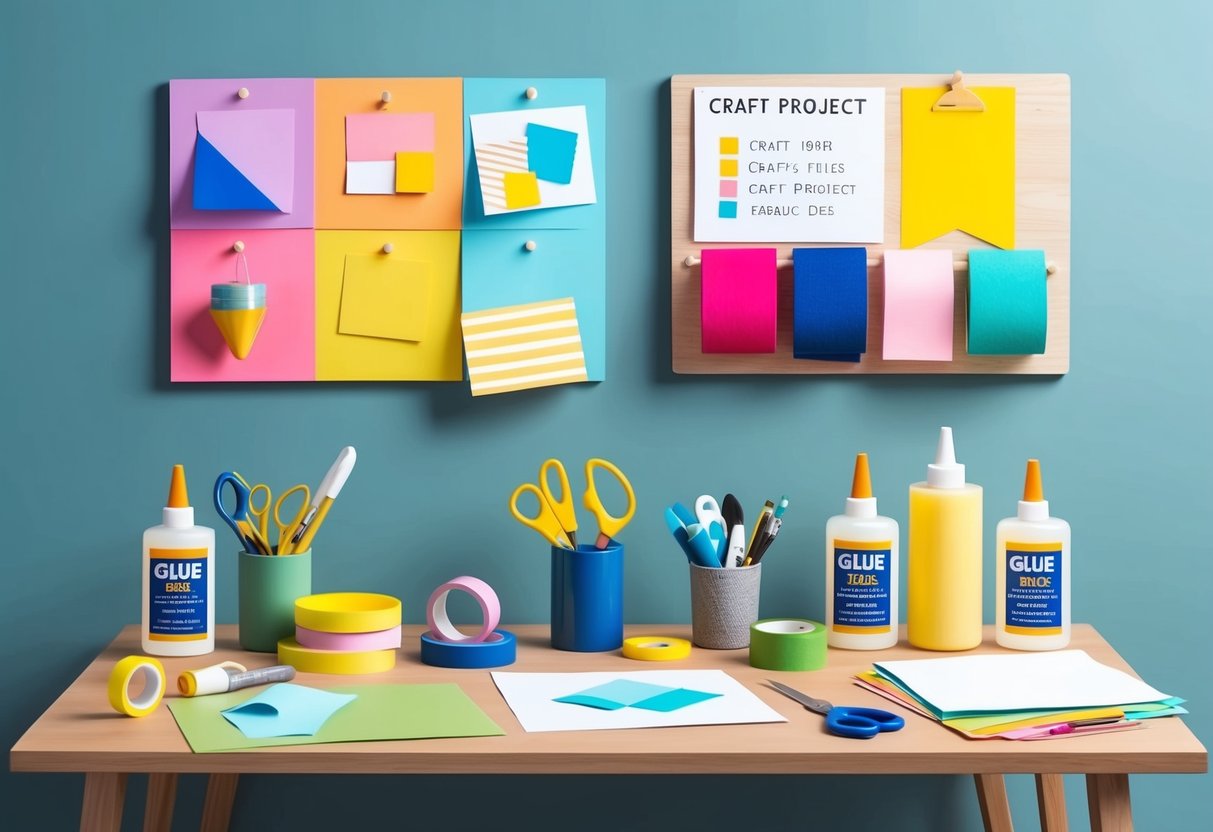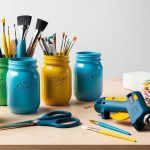
Specialty Glues and Their Uses
Certain glue types play essential roles in specialized crafting and DIY applications due to their unique properties. Their performance varies by material compatibility, bond strength, and long-term durability.
Construction Adhesive
Construction adhesive stands out for its industrial-grade strength and versatility. Often used in building projects and furniture repairs, this glue bonds heavy materials such as wood, metal, plastic, drywall, and concrete.
Its thick consistency helps fill gaps and irregular surfaces, providing a reliable hold even when parts don’t fit perfectly. This adhesive is commonly available in cartridges for use with caulking guns, making application precise and easy.
Crafters working with mixed media or requiring durable, semi-permanent fixes prefer construction adhesive for its high initial tack and weather resistance. It is suitable for both indoor and outdoor projects but requires ventilation during use due to strong fumes.
For further details about types and uses, Lowe’s offers a useful guide to glue and construction adhesives.
Epoxies
Epoxy glue, or two-part epoxy, is known for its superior bonding strength and chemical resistance. These adhesives work by mixing a resin and a hardener, which then cure to form an incredibly solid attachment.
Epoxies perform exceptionally well on metal, ceramics, glass, and some plastics. Crafters value epoxy for jewelry making, repairing ceramics, and joining dissimilar materials.
Its curing time varies; some set within minutes, while others offer more repositioning time for complex assemblies. As a result, epoxies are ideal when a rigid, lasting bond is needed, especially in high-stress or weight-bearing situations.
For more information about the properties of different adhesives, Dream a Little Bigger’s glue guide gives a comprehensive breakdown.
Mod Podge
Mod Podge is a popular all-in-one adhesive, sealer, and finish for crafts. It is water-based, dries clear, and can be applied with a brush or sponge.
Crafters use Mod Podge for decoupage, collage, and projects needing a smooth, protected surface on paper, fabric, wood, or canvas. This specialty glue is available in several finishes including matt, glossy, and satin.
Mod Podge is especially effective for adhering lightweight objects and adding a protective topcoat, while remaining easy to clean up with soap and water. Its versatility makes it a staple for both adults and kids interested in decorative crafting.
Find more about Mod Podge and other craft adhesives in this discussion on different types of craft glue.
Popular Glue Brands for Crafts
There are several well-known glue brands that crafters trust for specific materials and projects. Each has distinctive strengths and recommended uses, making them suitable for different crafting needs.
Gorilla Glue
Gorilla Glue is recognized for its robust bonding capability and water resistance. It is a polyurethane-based adhesive that expands as it cures, which allows it to fill gaps and bond uneven surfaces.
Crafters appreciate Gorilla Glue for woodworking, ceramics, metal, glass, and some plastics. It is especially popular for projects requiring a durable, long-lasting bond.
However, because it expands, users must apply it sparingly to avoid mess and difficulty with cleanup. This glue sets within 1-2 hours and cures fully after 24 hours.
Use gloves when applying, as direct contact can be hard to remove from skin.
Key features:
- Expands as it cures
- Strong, permanent bond
- Works on wood, stone, metal, foam, glass, and more
E6000
E6000 is an industrial-strength craft adhesive that stands out for its flexibility once cured. It is valued for creating a strong yet flexible bond across various materials, including fabric, leather, metal, glass, ceramics, and many plastics.
This glue is favored by jewelry makers and mixed-media artists needing a clear, waterproof adhesive that will not become brittle over time. E6000 dries clear and is paintable, making it discreet in finished work.
It offers an open time of about 5 to 10 minutes. Full cure is reached in 24-72 hours.
Ventilation is recommended, as E6000 contains chemicals with a noticeable odor and should be used with care. Its versatility and industrial-grade hold make it suitable for uses requiring both strength and flexibility.
Key features:
- Flexible, strong bond
- Waterproof and non-brittle
- Clear drying and paintable
Loctite
Loctite is widely recognized for its range of specialty adhesives, particularly instant and super glues (cyanoacrylate). It offers quick setting times, forming strong bonds in seconds.
Loctite is commonly used for precise, small repairs and delicate craft projects involving plastic, metal, rubber, porcelain, and paper. The brand produces several formulas, such as gel versions for vertical surfaces and impact-resistant formulas for added durability.
While Loctite is trusted for model making and fast fixes, it is not the best choice for flexible materials or applications subject to moisture. It is best applied in thin layers for optimal strength.
Users value Loctite for reliability and consistency in applications where exact positioning is crucial.
Key features:
- Rapid bonding (sets in seconds)
- Ideal for small parts and precision work
- Suitable for metal, plastic, ceramics, and rubber
Choosing the Right Glue for Different Materials
Selecting the correct glue is critical for a strong, lasting bond and a clean finish. Different surfaces such as plastics, metals, fabrics, wood, and drywall require adhesives with properties suited to their unique textures and demands.
Plastics and Metals
Plastics and metals can be challenging to bond because of their smooth, non-porous surfaces. Solvent-based adhesives like cyanoacrylate (super glue) or two-part epoxies are commonly preferred.
Super glue forms a rapid and durable bond with many plastics, but some plastics such as polyethylene or polypropylene may need a specialized plastic adhesive primer for reliable adhesion. Epoxy adhesives offer high strength and are suitable for metals, providing resistance to heat, water, and chemicals.
When joining metal parts, surface preparation—such as roughening or cleaning with a solvent—is crucial for a strong bond. For crafts that involve both metals and plastics, two-part epoxy can bridge the gap between materials, ensuring flexibility and longevity.
Projects often benefit from using solvent-based glues designed for non-porous surfaces because they set quickly and resist wear. Always check compatibility on scrap materials to avoid warping or clouding sensitive plastics.
Key tips:
- Use a primer if bonding polypropylene or polyethylene
- Sand and clean metal surfaces for stronger adhesion
- Epoxies offer maximum strength and resistance



